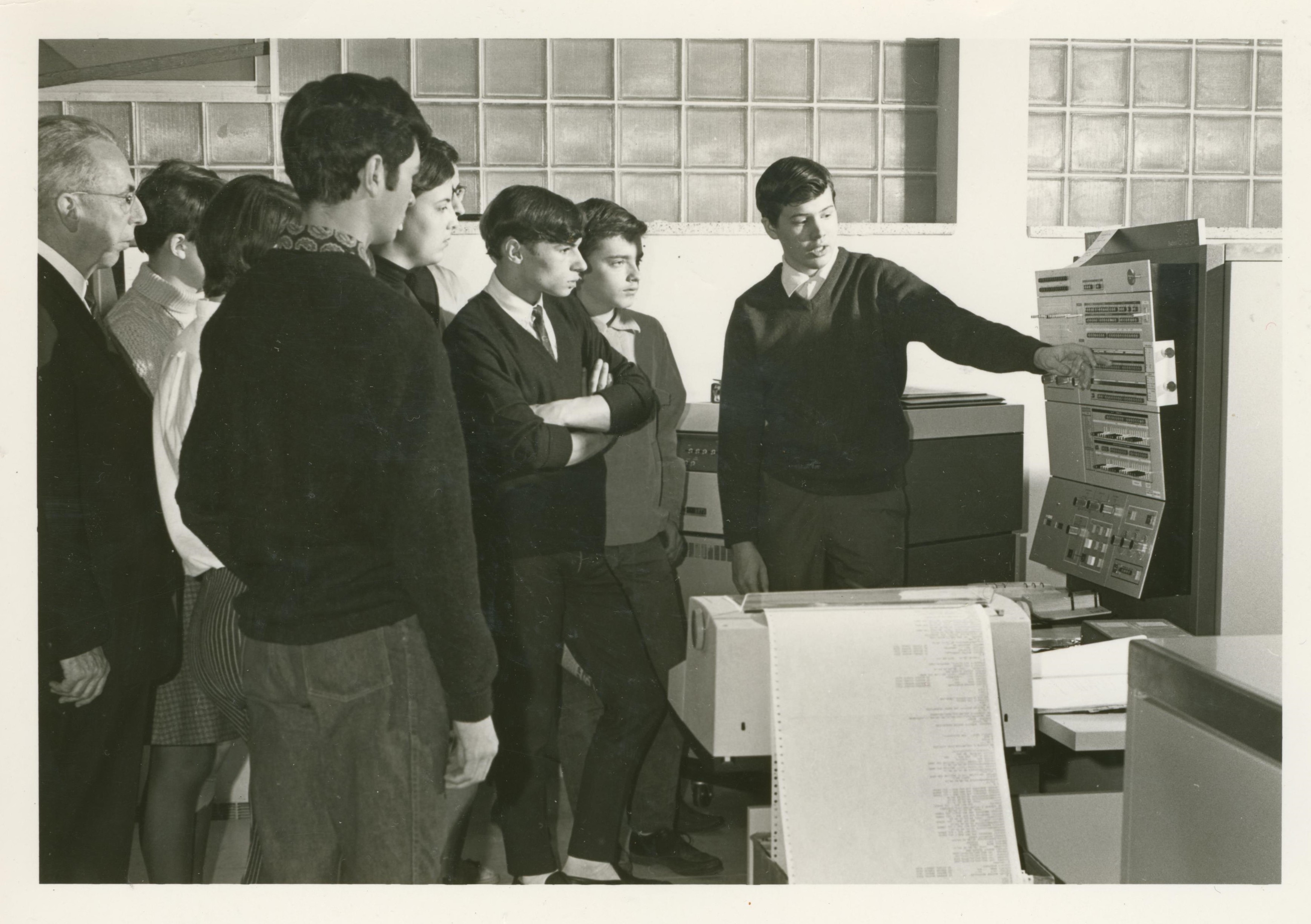I arrived at Lakehead University in 1967 and was the director of computer services from 1976 to 1993 before retiring in 1996. Today I am 88.
This is a history of what my colleagues in Computer Services achieved during my time at Lakehead as I remember it. The key factor in their performance was the leadership of Dr. Bill Tamblyn, Lakehead's founding president.
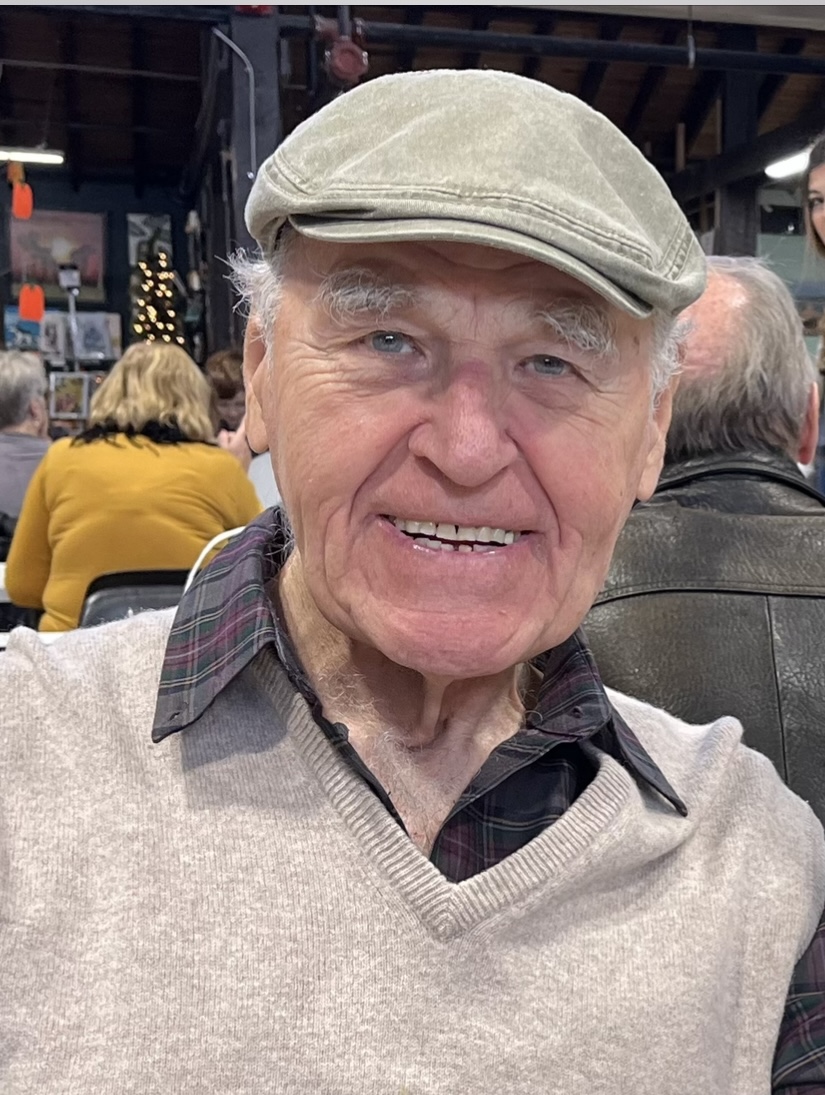
After former Director of Computer Services Don Watson (pictured above) and Senior Administrative Programmer Philip Kempe retired from Lakehead, they became best friends. "We played cribbage for many years at the 55+ Centre and online," Don says.
When Lakehead's first computer—an IBM—arrived at the end of 1967, faculty were setting up their academic programs at a fast pace. Dr. Tamblyn had spent two years travelling the world to find qualified faculty, staff, and students.
The new computer was a collection of big, cable-connected steel boxes and computer staff began the work of making it operational. This was a time when innovative technology inspired novel approaches by Computer Centre staff, scientists, applied mathematicians, teachers, and administrative departments such the Registrar's Office and the Business Office.
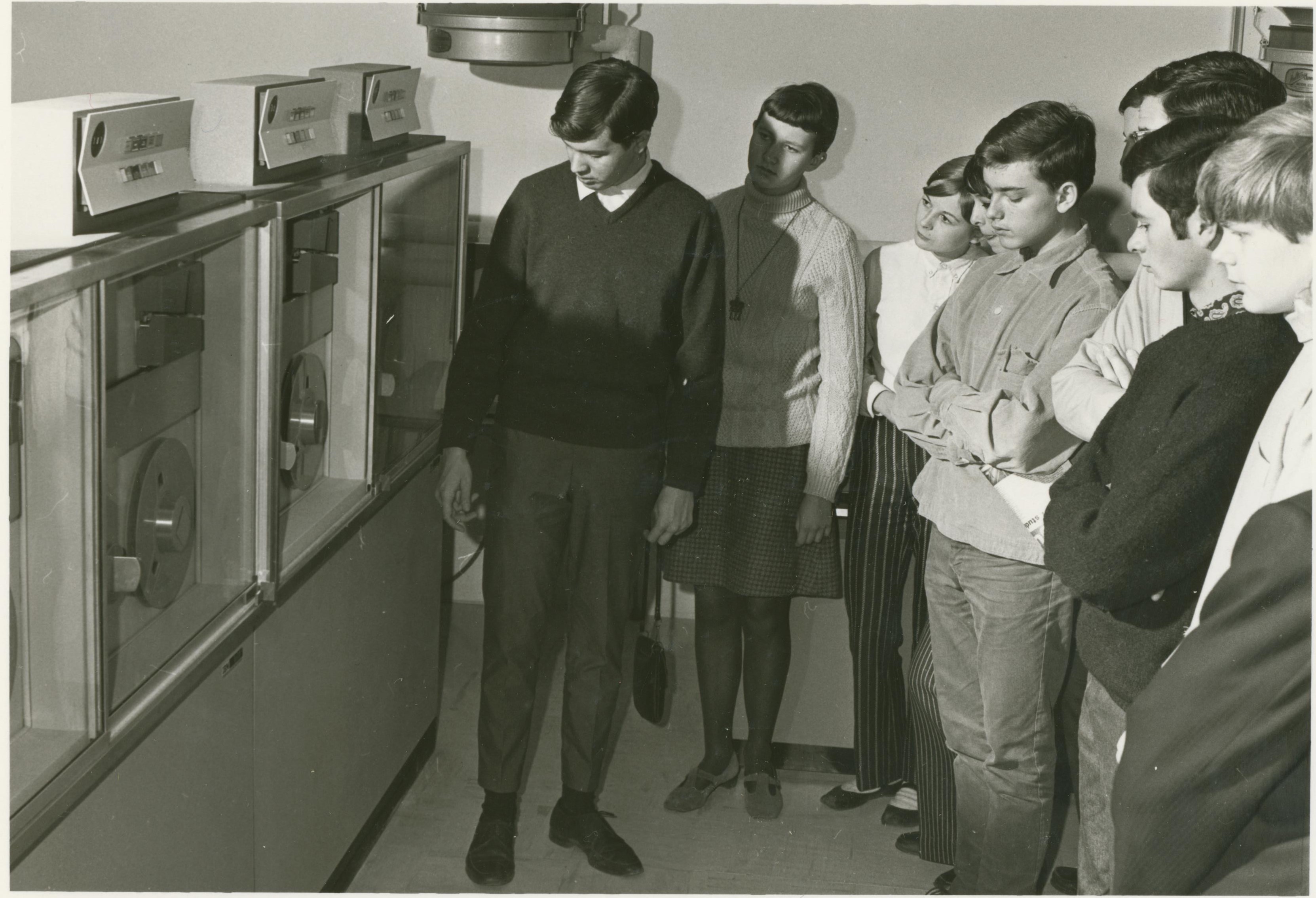
Supervised tours of the computer room would have been the only time that students would have been allowed in. Admittance was restricted to the computer services director, operators, IBM staff, and technical staff responsible for software maintenance. "Anyone entering the computer room had to sign oaths and insurance documents," Don says. "Taking anything into or out of the computer room was also prohibited."
As I look back, I am amazed at what Computer Centre staff achieved. For example, the operating system of the IBM was replaced by one that was intended for much more powerful machines. The method of making it work on Lakehead's small computer was to remove any software routine that wasn't needed—I've never heard of any other university that did this. It enabled a university of about 2,500 students to have one of the best student services anywhere.
There were those at Lakehead who relished the opportunity to use the computer and those who didn't. Since the University Senate hadn't been told the computer was coming, many senators would have preferred that the money was spent on other needs. However, it certainly made a difference to the numerical analysis course I taught, as students could now tackle more complex and realistic problems.
Printers Fit for Giants and Computers that Filled Rooms
We had a printer the size of an upright piano, in the room next to the computer, with several keypunches that allowed students and faculty to prepare reasonably sized programs. The cards were read into a computer-processing queue and processed in the order of submission; the results came out on the printer. It was a fast service that depended on software developed by the University of Waterloo.
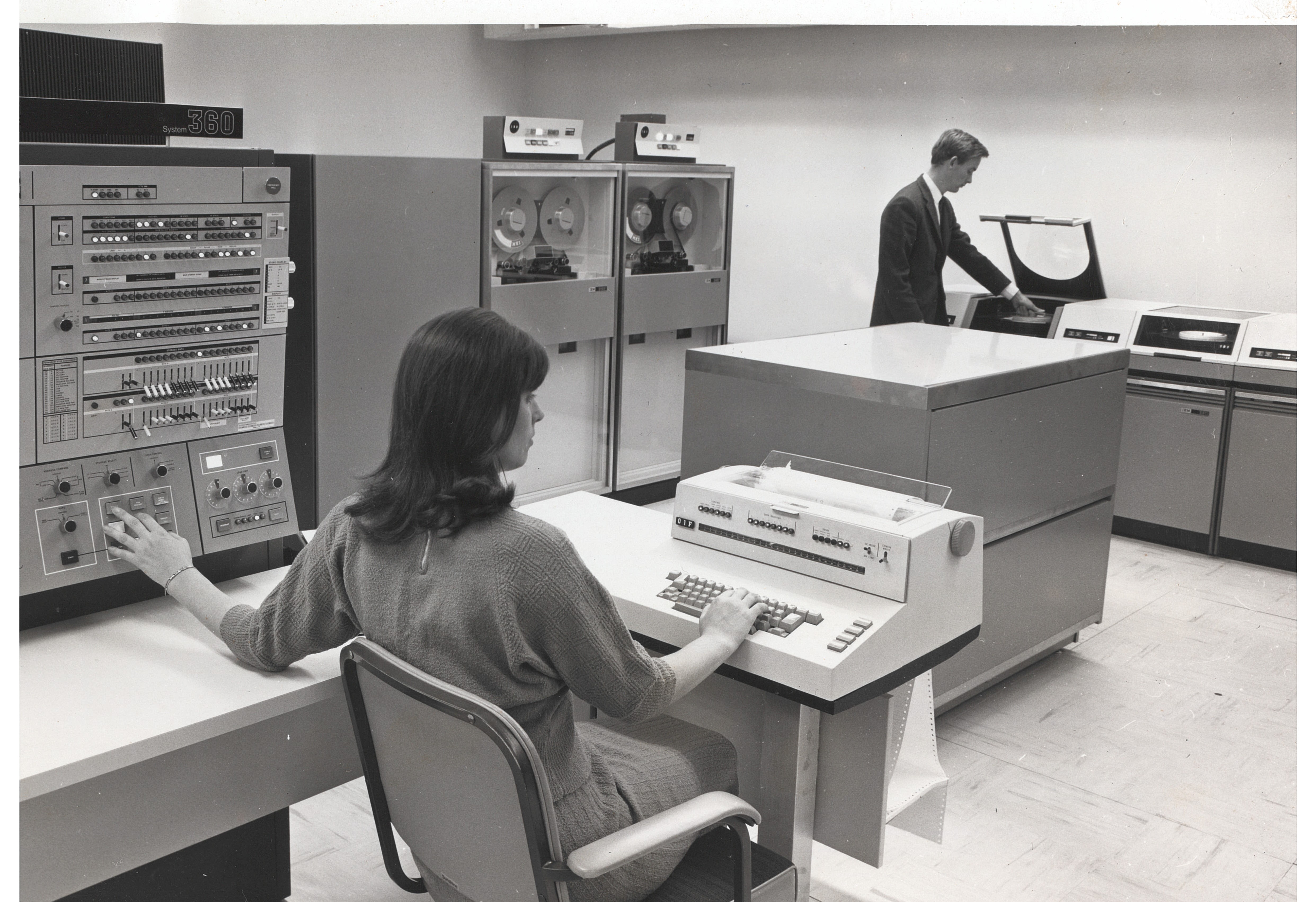
Mary-Ellen, the senior operator pictured here, supervised all other operators and was in command of the whole computer—only she could start and shut it down. "If I remember correctly," Don says, "Its language of operation was binary and most of the other lights and switches were binary switches." Surprisingly, being a computer operator didn't require a technical background.
APL, a brilliant new computer language, was one of the earliest examples of interactive computing that we take for granted today (APL is an acronym for "A Programming Language"). Lakehead gradually began acquiring APL terminals and, by the fall of 1970, had 10 available for use. The Computer Centre hired the most capable students to help anyone learning or using APL.
The programming instructions looked like algebraic expressions, with considerably more operators than "+", "-", "x", "÷", etc., and there were no priority rules (like the BODMAS rule). It was so simple that anyone who'd done some algebra could understand it.
APL brought excitement to classes visiting campus from local schools. The clattering as the computer output was printed by the terminal gave the impression that the computer was talking back and students far from home came just to enjoy the sense of conversation it gave.
Alan McEwan—Lakehead's first director of computer services who was hired in 1966—then bought a computer with more capacity and sold the one he had. This gave Lakehead the most powerful computer between Toronto and Winnipeg and permitted the number of terminals to be increased until the maximum number of 24 was reached. This was almost certainly the largest group of terminals in one room anywhere in Canada.
APL lasted several years at Lakehead before the academic use of computers evolved from programming to using purchased software packages. As the cost of computers dropped, departments bought their own computers. A University store began selling whatever they needed.
Ushering in the Internet Age
In the late 1970s, Lakehead needed more up-to-date central computers. APL was moved to a small minicomputer and interactive word-processing services began on the same minicomputer. The most powerful minicomputer available followed and conversion from the IBM mainframe computer began. When the conversion was completed, DEC (Digital Equipment Computing) became the Computer Centre's computer supplier.
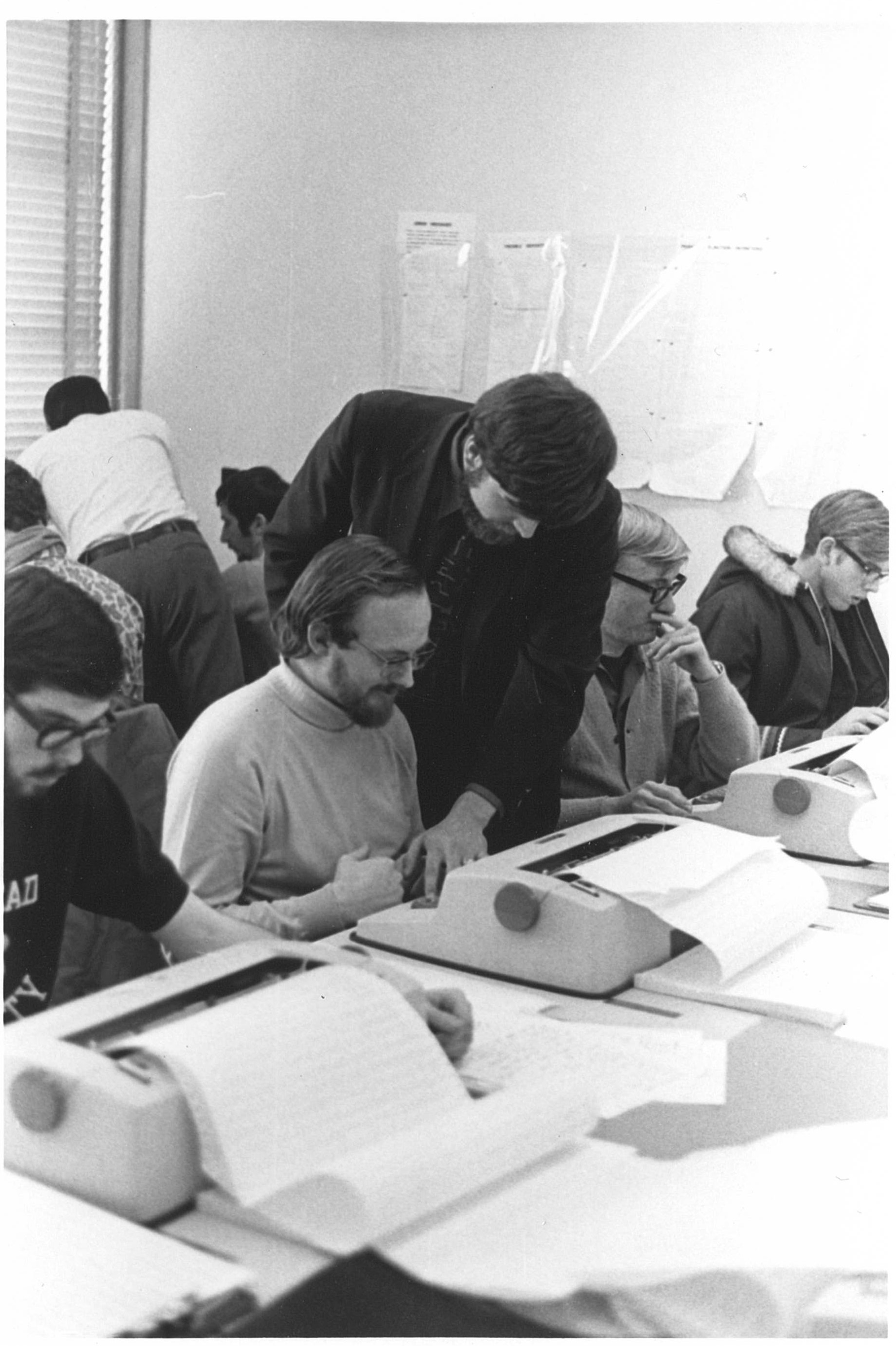
Computer Centre student employees help users at APL terminals in the 1970s.
Later, a smaller minicomputer was added to run the UNIX operating system and Lakehead brought the first internet service to Thunder Bay. The University of Toronto (U of T) had received government funding to run cabling to its campus with the understanding that other Ontario universities could connect to U of T through the telephone system.
The registrar and the chief business officer were given their own powerful micro-computers during this period. Until this point, almost all universities programmed their own administrative computer systems, such as the registrar's records. But for Lakehead to function as a good university, the administrative computer systems being developed needed to provide the best possible service at the lowest possible cost. A small team of about five people began a process called re-engineering to investigate the quality of what had been produced over 20 years and fix any problems.
A Fulfilling Career and Inspiring Mentors
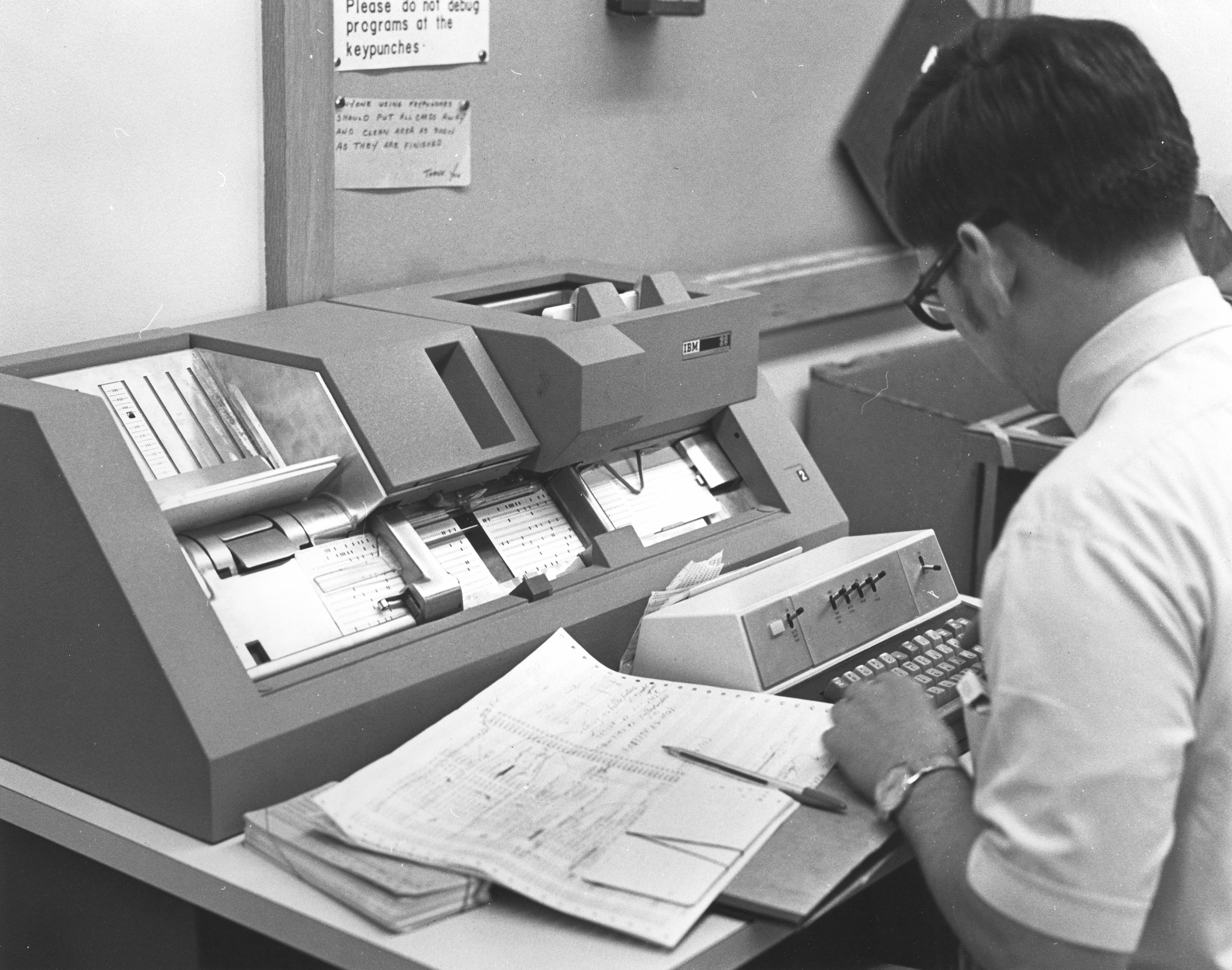
The IBM keypunch machine above punched holes that encoded program data into thick paper cards. Once a deck of punched cards was ready, they were inputted into a computer, which read the cards before a computer operator printed the output and handed it to the student who'd requested it.
Lakehead University was lucky to have had 30 years of service from Senior Administrative Programmer Philip Kempe who had the imagination to always see each project as a road to the future and made certain that he carried his staff with him. That made us a happy and productive group. As a result, systems were well designed and well integrated. Eventually, there was only one centralized source of data and University departments stopped using paper records.
Then, as the cost of computers dropped, departments and individuals bought their own computers. University computer facilities became just another service on the global internet—Lakehead's Computer Centre directors had worked themselves out of a job.
My final task before my 1996 retirement was to search for an integrated administrative software package that would serve three small Ontario universities—Lakehead, Laurentian, and Trent—although I left before it was installed.
From the very beginning, Lakehead's Computer Centre performed above its weight, just as the whole of the University did, then and now. Quality performance today is usually built upon previous quality performance.


